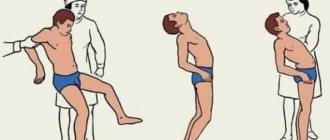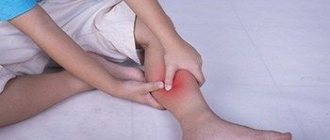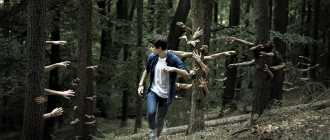What it is
Pediophobia is the name given to the fear of dolls. This is part of automatonophobia - the fear of any figures resembling a person. The fear extends to plastic, porcelain, latex and any other toys of an old-fashioned or modern look. Even mannequins in stores cause fear. Fortunately, the problem can be treated quite successfully if you consult a specialist in a timely manner.
Fear of dolls' gaze can occur in two main forms:
- Passive. A person leads a completely full life and only feels discomfort when he sees a toy.
- Active. In everyday life, an individual feels a constant fear of encountering a doll.
How does pediophobia manifest itself?
In everyday life, when a person does not encounter objects that resemble doll-like outlines, pediophobia is quite adequate. But as soon as a person sees the object of his fears, he simply changes before his eyes. In this case, it absolutely does not matter whether there are other people nearby, where exactly the pediophobe is and in what situation his panic began.
People who have this phobia learn to avoid dolls. They do not visit children's stores, toy exhibitions and puppet theaters. If such an object comes into view, an inexplicable feeling of anxiety may arise, a real panic attack or psychological stupor may begin. The last manifestation of the fear of dolls is expressed in the form of numbness. At the same time, a person cannot move at the sight of even a small toy.
It is worth noting that any stressful situation has a negative impact on your overall health. During panic or after coming out of a stupor, you may experience a feeling of nausea and severe dizziness. Breathing can become difficult, and in the most severe cases, fainting occurs.
Fear of dolls: reasons
Pediophobia is not an innate fear, but an acquired one, the formation of which occurs on a subconscious level. Fear of dolls can occur for the following reasons:
- Watching horror films. Stories about killer dolls and other similar “horror stories” are not uncommon in cinema. Impressionable viewers transfer the fear they felt while watching it into everyday life.
- Childhood impressions. Sigmund Freud believed that all problems, including phobias, have their origins in childhood. If a child is frightened by a doll or severely scolded for breaking an expensive toy, the negative attitude can last a lifetime.
- Stressful situation. It happens that at a critical moment for a person (violence, an attack of illness, a fire, a natural disaster, and so on), there are no people nearby who could provide help. If at that moment there was a toy next to the person, negative associations will clearly attach to it.
- Unaesthetic appearance. Some manufacturers (not on purpose or intentionally) make their dolls ugly and even scary. Seeing such a doll, a child or an adult may experience strong fear or disgust.
- Fear of damage. The doll is a key attribute of the voodoo cult. People who are afraid of the evil eye, damage and other occult things, as a rule, are wary of dolls.
- Rejection of falsehood. Artificial hair, lifeless eyes, unnatural proportions - all this causes fear and even disgust in some people.
Reasons for fear of dolls
The reasons for the development of fear of dolls, or what this disease says:
- Psychotrauma with direct associations. For example, a child was frightened by the appearance of a doll, or a toy screamed in the dark. Or the child was shocked by a horror film about a doll. Or the child is very upset because he lost a toy. Or he was afraid that she would return for revenge. And another thing - there are a lot of options.
- Psychotrauma with indirect associations. For example, a child was punished for a broken toy, or the child experienced some kind of negativity and at that moment concentrated his attention on the doll (she was in the room, “saw” everything, but did not help, or became a witness to his misconduct or secret). Or the child got lost during a mass celebration where there were life-size dolls, or in a shopping center full of mannequins.
- Conflicting feelings. The dolls are very similar to living people, their gaze is so piercing, but at the same time empty. And in general, wax figures, for example, are very similar to people, but they don’t move or speak. As if they had died.
- Suggestion, media influence. Evil dolls coming to life or demons possessing them is a favorite plot point in horror films. Annabelle and Chucky are the most popular representatives of this genre. Many people developed a fear of dolls after watching the movie Child's Play. What makes the situation worse is the fact that many films add the saying “Based on a true story.” This will be enough for a suspicious and suggestible person.
- Fear of an uprising of clones or artificial people, robots. An unusual reason, but sometimes this happens. The pediophobe is afraid that by going against nature by creating man, society will doom itself to death and the project will get out of control.
- Belief in mysticism and magic. Closely related to the influence of "based on a true story" horror films. Dolls are used for rituals, causing damage, attracting dark forces, etc.
- Fear of illness, ugliness, etc. (associated with the distorted proportions of dolls). Big eyes, a small nose, long or short arms and much more subconsciously frighten a person.
- Fear of pregnancy, children. If a person is afraid of baby dolls, then perhaps this is due to a reluctance to have children.
This is interesting! All children humanize dolls. It seems to them that they are pretending, but when night falls or when they are alone in the room, they come to life. Because of this, children are often afraid of offending the doll. And if they accidentally drop it, then they expect revenge, they are afraid to turn their back to the toy, to be alone with it. Sigmund Freud also wrote about the inability of the child’s psyche to distinguish reality from play. If fears are not worked through, then together with the child they move into adulthood.
How fear manifests itself
Fear of dolls can have very different and unexpected manifestations. Here are the most common symptoms:
- Avoidance. A person suffering from pediaphobia usually avoids the toy departments in the store. Tries not to visit playgrounds and other places where he might encounter dolls.
- Anxiety attack. When a person sees a doll, unpleasant stories associated with moments of the past are scrolled through a person’s head. The individual begins to fear their repetition.
- Stupor. If a person does not have a bright, violent temperament, contact with a doll can lead to numbness.
- Panic attack. At the sight of a doll, a person can become aggressive and uncontrollable. As a rule, leaving the visibility zone of the toy, the individual calms down.
- Deterioration in health. Contact with a frightening object may cause dizziness and nausea. In severe cases, the possibility of fainting and asthma attacks cannot be ruled out.
Diagnosis of fear of dolls
There is no specific test for identifying pediophobia. You can suspect the presence of a phobia of fear of dolls based on the following signs:
- you are experiencing severe anxiety and want to escape from the room where the dolls are located;
- you feel uncomfortable in direct contact with the toy when you look at it;
- upon contact with a toy, you feel negative somatic changes (described in symptoms);
- when in contact with a toy, your speech and thoughts lose coherence, a vacuum appears in your head;
- The closer you are to the doll, the stronger the signs and symptoms and general discomfort.
There are two variants of the course of the phobia: a person is constantly anxious and lives in anticipation of contact with a doll; anxiety intensifies only with direct contact with the toy.
Psychological help
If a person is haunted by a fear of dolls, it can seriously affect their quality of life. The most correct decision would be to contact a psychologist. A specialist may resort to the following treatment methods:
- Conversation. As a rule, the first session takes place in a question-and-answer format. During the conversation, the specialist will find out the roots of the problem and formulate ways to resolve it.
- Behavioral therapy. The psychologist gives the person a certain program of tasks that he performs while at home or in society.
- Anti-stress therapy. The main goal is to relieve the patient of anxious thoughts. Not only the emotional, but also the muscular reaction to the stimulus is blocked. Typically, relaxing music is used and breathing techniques are practiced.
- Exposure therapy. This refers to the deliberate introduction of the patient into a stressful state, in which he must remain to the breaking point under the supervision of a specialist. By the end of the session, the individual must realize the illusory nature of fear and overcome panic on their own.
- Hypnosis. To study the nature of the problem and suppress it, the patient is put into a trance state.
How to get rid of pediophobia
Treatment for pediophobia is a complex and lengthy process. It should be handled by a qualified psychotherapist. First, he will find out the source of the problem, for this he will spend not a single hour talking in a question-answer format, thanks to which he will be able to build the correct treatment tactics. Information belongs to the site medical blog rew-med
Drug treatment
Fear of dolls is a rare and quite complex phobia. Sometimes drug treatment may be required to effectively solve the problem:
- Phytotherapy. The most gentle method is to take herbal teas. Plants such as mint, hawthorn, valerian, peony, and dill have a positive effect on the nervous system. It is important to make sure that the patient is not allergic to these drugs.
- Benzodiazepines. Drugs based on psychoactive substances, the use of which is possible only under the supervision of a specialist. Despite the fact that some attribute narcotic properties to this group of drugs, this is not true.
- Antidepressants. As a rule, realizing his problem and its ridiculousness in the eyes of others, the patient becomes despondent and depressed. It is this group of drugs that will help you get out of this condition.
Reasons for developing fear of dolls
Fear of dolls can manifest itself at any age, but most often all phobias originate in childhood, when the human psyche is not yet fully formed. The causes of pediophobia can be both logically explicable and irrational. Psychologists identify several main reasons:
- childhood shocks become the dominant source of fears when the child’s immature psyche animates inanimate objects, believing that dolls come to life at certain periods.
- Watching horror films in adolescence is the initial factor that triggers the phobia mechanism. A person realizes the irrationality of his own fear, but cannot cope on his own. Subsequently, the fear of dolls becomes obsessive and takes root in the mind.
- negative experiences and associations with the dead, while the imagination draws terrifying pictures of the supernatural world and death.
The symptoms of a phobia may be different for each person. Some people simply experience hostility and rejection at the sight of old or new dolls, while others will panic at the mere sight of a mannequin, a sculpture, or the memory of a realistic children's toy.
Celebrities with Pediaphobia
Not only ordinary people, but also many world stars are well aware of the name of the phobia “fear of dolls.” Some celebrities have encountered it and talk about it openly. Here's what we're talking about:
- Emily Blunt. As a child, the famous actress was very frightened by the garden plaster gnomes that stood in her neighbors’ yard. Since then, she has been afraid not only of dolls, but also of any figurines that depict people.
- Chad Michael Murray. The American actor told a story about his grandmother, who collected porcelain dolls. One day, the empty, cold glances of lifeless statues filled him with horror, which persisted for many years.
- Ashton Kutcher. Demi Moore, the actor's ex-wife, is fond of collecting dolls. Looking at the accumulation of lifeless faces, the man suffered from insomnia. As a result, he convinced his wife to donate the collection to the museum.
Symptoms
Whatever the reason for the fear of dolls, strong emotional shocks arise in the mind of the person suffering from a phobia. Some people may experience panic only when they come into contact with a toy. Others live in constant fear. The following physical and psychological symptoms may be present in a phobia:
- Rapid breathing.
- Increased heart rate.
- Dry mouth. Feeling short of air.
- Shiver.
- Freezing in place.
- Crying, screaming, trying to escape.
Some pediophobes experience extreme anxiety in the presence of dolls, including store mannequins. It is quite an embarrassing and debilitating phenomenon that negatively impacts a person's life.
The scariest movies about dolls
Considering the fact that cinema is an important factor in the formation of pediatric phobia, it is worth paying attention to this issue. Here are the scariest movies about dolls:
- "Children's Games". The film is about how the restless soul of a killer inhabits a children's doll. The little owner of the toy, suspecting something is wrong, tries to tell the adults about it, but no one believes him until terrible events begin to happen.
- "Lord of Puppets" The film is about a man who is able to infuse life energy into dolls. His “creations” begin to commit terrible crimes.
- "Doll". A young and happy family hires a governess. The nanny is horrified when she realizes that her pupil is just a huge doll.
- "Lovely Dolly." A film about the owner of a large toy factory. One day, a doll found during an archaeological excavation ends up in a warehouse. It turns out that the toy was possessed by an evil spirit.
- "House of Wax". The film is about a group of young people who encountered an evil maniac master. He made large wax dolls from living people.
Treatment
Hypnosis and desensitization therapy are two of the most popular ways to overcome fear of dolls. Desensitization involves slowly exposing the pediophobe to similar toys.
A person starts by looking at photographs or films, reading books about dolls. This continues until their presence ceases to cause alarm. This usually happens under the supervision of a doctor or at home with the help of friends and close relatives.
Hypnosis and behavioral therapy are aimed at reprogramming Pediophobia in order to turn scary thoughts about the objects of the disorder into positive ones.
What scientists say about pediaphobia
The fear of dolls and mannequins causes skepticism among many scientists. The fact is that people were not afraid of dolls until they became realistic. The first primitive children's toys did not cause any fear. But the presence of a human face on the object changes everything.
The fact is that in the process of human development, the brain has developed the ability to respond to faces and record information about them. This is due to the instinct of self-preservation among cavemen. Even then, another person meant danger. Thus, the doll’s fear of a human face is something like an echo of the consciousness of the ancestors. But again, this description is not true for all cases.
Fear of dolls or pediophobia
The fear of dolls and mannequins is called pediophobia. Fear can be caused by any children's toy, mannequins, robots, and even the sight of large life-size dolls becomes a test for a person. It’s scary to even imagine how a disease can behave in our consumer world, when there is a shopping center or a toy store at every step. Doll phobia is a psychological disorder that is determined by the degree of development. The pathology can reach incredible severity when you are not just afraid of cute porcelain human figurines, but experience a real panic attack at the sight of even the smallest doll.









